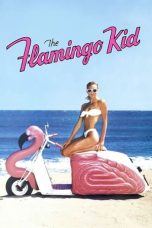- Source: Come Talk to Me
"Come Talk to Me" is the opening song from English rock musician Peter Gabriel's sixth album, Us (1992). It was written by Gabriel and recorded as a duet with Irish singer Sinéad O'Connor. The song was released as a single in the US and also received a music video directed by Matt Mahurin. The music video also included the involvement of Michael Coulson, who served as the creative director from Real World, and British visual artist Nichola Bruce.
Background
Gabriel wrote "Come Talk to Me" about the breakdown in communication between him and one of his daughters, who believed that her father had become distant following his divorce with Jill Gabriel. He noted that his daughter struggled to express her grievances pertaining to their strained relationship and characterized the song as "a cry from the heart." Footage of Gabriel and producer Daniel Lanois rehearsing "Come Talk to Me" was featured during a UK Channel 4 documentary that aired in 1993. Lanois characterised "Come Talk to Me" as a "simple song with quite a huge production" and a "little message to one person that can be interpreted as a universal message."
The song begins with distorted guitar chords, which later gives way to African-style drums, bagpipes, and synthesisers. The African drums were taken from a Senegalese groove recorded by master drummer Doudou N'Diaye Rose in 1980. Rose and Gabriel chopped up the drum groove and augmented it with other percussive beats, including a shaker played by Daniel Lanois. Gabriel experimented extensively with finding suitable sonic textures and gravitated towards the bagpipes due to their "gutsy and primal" quality.
The additional vocals during the chorus were sung by Sinéad O'Connor, who Gabriel admired and had a brief romantic relationship with. O'Connor and Gabriel first met at a 1990 Amnesty International concert in Chile, where they performed "Don't Give Up" together. On his website, Gabriel said that it was "a powerful thing" to have O'Connor appear on "Come Talk to Me", adding that he was pleased with her performance.
In an interview with The Washington Post, Gabriel stated that "Come Talk to Me" carried more significance to him than "Kiss That Frog", a song from Us that he dismissed as a "throwaway". "But it's important for me to have both sides present – different moods, different feelings."
Artwork
The cover art was created by Scottish sculptor David Mach, who created an image of Gabriel's screaming face. Using collage, Mach created a 1320mm x 1310mm x 120mm image of Gabriel with his mouth open and used postcards for the green background. Mach contorted and processed Gabriel's face into a "nightmarish, suppressed scream" and decided that the image would be a good fit for the song, rationalising that Gabriel "was a very good screamer". He also said that the warped image of Gabriel was a representation of "the distortion of language", explaining that similar to a game of Chinese whispers, the original intent of a verbally communicated message can be misinterpreted by the person on the receiving end.
Critical reception
Richard Harrington of The Washington Post commented that the song "explores barriers to communication and the need to 'unlock the misery'", adding that "despite its somber tone, it's a typically elastic Gabriel concoction built on fuzzy guitars, African drum loops, a Russian folk chorale, bagpipes, doudouks [sic] and a Sinead O'Connor harmony." Daryll Easlea, a Peter Gabriel biographer, noted the duration of the song's fade-out, saying that it created the impression of a conversation "continuing in a permanent loop." David Browne of Entertainment Weekly described the lyrics as "vague enough to apply to romantic liaisons", while also acknowledging that Gabriel's original intention of writing the song for one of his daughters was also applicable.
Greg Kot of Rolling Stone thought that some of the "artsy" lyrics detracted from the "otherwise beautiful 'Come Talk to Me'". The Orlando Sentinel praised "Come Talk to Me" as "an enticing song, stunningly arranged" with "bagpipes, driving polyrhythms, vocal harmonies by Sinead O'Connor, the Dimitri Pokrovsky Ensemble and various exotic instruments [that] combine to make this plea for communication almost as moving as Gabriel's earlier masterpieces, Biko and San Jacinto". Similar to Kot's commentary, the publication was also critical of some of the song's "pretentious lines".
Live performances
"Come Talk to Me" was the concert opener on his 1993–94 Secret World Tour, during which Gabriel sang the song holding a handset attached to a long cable, which pulled him back toward a telephone booth that he emerged from through a trapdoor. Depending on the leg of the tour, Gabriel was joined by Paula Cole, who was situated on a circular stage; this platform was attached to a square stage connected by a narrow runway with a conveyer belt that tugged Gabriel around as he advanced further from the telephone box toward the center stage holding the handset. A micro-camera was also attached to Gabriel's head, which projected images of Gabriel's face throughout parts of the performance.
The song was later performed on the 2012–2014 Back to Front Tour and also appeared on the Back to Front: Live in London album recorded at The O2 Arena in London.
Personnel
Credits from the Us liner notes.
References
Kata Kunci Pencarian:
- BDSM
- Seungri
- Easy Come, Easy Go (film 1967)
- Selena Gomez
- Daftar konser dan acara JKT48
- How Sweet the Sound: 25 Favorite Hymns and Gospel Greats
- The Best of Della Reese (1972)
- Daftar acara NET.
- Shania Twain
- JKT48
- Come Talk to Me
- Come and Talk to Me
- And I'll Scratch Yours
- Holocene (song)
- Scratch My Back
- Talk Talk
- Talk to Me Nice
- Talk to Me (2007 film)
- Secret World Tour
- Nova Rockafeller
No More Posts Available.
No more pages to load.







